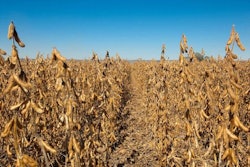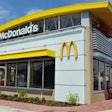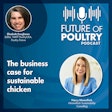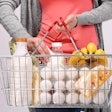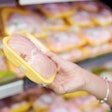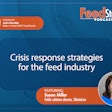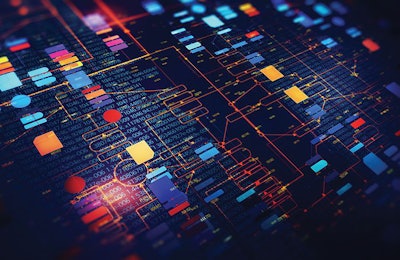
“Disruption” has been a buzzword for several years regarding new Internet of Things (IoT) innovations; however, in the agricultural technology space, few technologies have garnered more attention than the safety, sustainability and traceability potential of blockchain.
Blockchain technology generates dynamic, web-based lists of records – or blocks – which create one version of the truth in a supply chain that can be accessed by multiple parties. These blocks are linked and secured using cryptography, which ensures security, authentication and the integrity of transactions.
Beyond its obvious benefits and applications, in feed and food production, blockchain has the potential to deliver consumer-facing supply chain transparency.
However, despite the hype, blockchain developments, systems and applications remain an uncharted — and complex — ag tech frontier.
“A lot of people say they’re doing blockchain, but nobody really seems to be doing it as deeply or fully as they should be,” says Aidan Connolly, CEO of dairy technology startup Cainthus and former Alltech chief innovation officer. “It’s not something which is immediately comprehensible to the end user or the person who benefits from it — be that consumer, farmer, whatever it is — in the chain. The vast majority just have the sense that this is a wonderful technology that makes things more traceable, but not necessarily understanding how it make [things] safer, what exactly it brings to the table.”
The following aims to examine blockchain’s appeal to consumers, identify agricultural applications and opportunities and highlight the obstacles hindering its widespread adoption.
Is this what the consumer wants?
The successful business-to-consumer blockchain pilots have allowed prospective buyers to learn about their food’s “story” while still at the grocery store. More of a novelty, the question is what does — or can — blockchain really deliver to consumers?
The first answer: using transparency to build trust in the food system.
“I think people just want to able to have trust in the food they eat,” says Marieke de Ruyter de Wildt, founder of The Fork, a company that helps agrifood companies integrate blockchain into their business. “Do I want to know the origins of everything in my life? No, I don’t. Do I want to be able to trust what I eat? Yes, I do.”
Safety aside, Jessi Baker, founder of Provenance, a blockchain platform provider, notes that digitally savvy consumers also “want assurance that the things they’re purchasing have not caused harm to the environment and societies from which they originated.”
Beyond transparency, increasing levels of consumer awareness and interest may usher in a new age of food and nutrition-related blockchain applications.
“The consumer of tomorrow is definitely different from the one from today,” says De Ruyter de Wildt, noting that they will want to know if products meet their individual nutrition needs at the micro level.
“Transparency is an intermediary step in blockchain’s evolution within the food sector, but blockchain’s best application will be its use for personalization,” she says. “I want to know what I am eating because I want to know if it is a fit for me. Blockchain is a key enabler to do this, acting as the data exchange engine.”
Blockchain in agriculture
According De Ruyter de Wildt, 95% of the blockchain applications in development are focused on traceability.
“I don’t think [traceability] is the best use for blockchain, but that’s where people start their blockchain journey,” she says, and that it is commonly used in the “lesser corners” of a business.
De Ruyter de Wildt feels blockchain will be most beneficial in agriculture by streamlining and expediting financial transactions to benefit farmers and by limiting the “human aspect,” i.e. curbing human error and, in some instances, corruption, in supply chain touchpoints.
“Blockchain should be used to automate these payments,” she says. “Not only at collection points, but really throughout the supply chain. Liquidity is really an issue and blockchain can solve that.”
Data ownership and related data-based business models can be a sensitive topic; however, blockchain technology establishes who owns the data and can allow participants to “earn on their own data,” De Ruyter de Wildt says.
As an example, she notes the development of “a new sort of income” for farmers that allows them to trade their carbon footprints directly on carbon markets.
Blockchain also has the potential to replace certification systems.
“Blockchain is going to help us move away from our current binary food system,” De Ruyter de Wildt says. “We are starting to buy food based on real-time information. So, for example, you don’t need certification to tell you whether it’s organic or not anymore — that’s not the question — it’s the entire impact of the product and its life cycle, that is important. We’ll start to have much more real reporting on the impact of food production.”
Adoption obstacles
In many ways, blockchain is still in its infancy, and the adoption of blockchain technologies into food and feed production face several challenges.
1. Investment: While food companies are interested in the technology, they want to know what their return on investment will be; however, a dollar value is difficult to quantify.
“Nobody can give that. I can give you a number, but, by definition, that’s a made-up number,” De Ruyter de Wildt says. “Food companies fear missing out, but at the same time, they want to know exactly what the [return on investment] will be. You can’t. This is the attitude of the industry towards new technology. It’s a big risk.”
2. Regulation: Europe’s General Data Protection Regulation (GDPR) may complicate blockchain’s progress.
“The GDPR basically says, you as a person have the right to be forgotten in digital systems, but blockchain is particularly good at not allowing [things] to be forgotten,” De Ruyter de Wildt says.
3. Standardization: Some efforts are underway but, to date, a global standard for the use of blockchain in food value chains does not exist yet.
“Food safety is such an important issue, but the question is, from a [blockchain] standardization perspective, who is going to do that?” she says. “There are a few players who could, but nobody is really jumping on this. Who is picking up the bill?”
De Ruyter de Wildt recommends collective action from the private sector and a push toward harmonization.
4. Quality assurance: Garbage in, garbage out. Blockchain itself cannot guaranty the safety or quality of a product, but it does allow stakeholders to quickly identify problems and the bad actors. De Ruyter de Wildt points out that blockchain pushes for a stronger commitment to data, improving data quality, because of its immutability and unstoppable nature.
5. Scalability: The blockchain community continues to tackle scalability challenges, Baker says, which “continues to be a barrier to the commercial case of deploying into scale industrial food environments.”
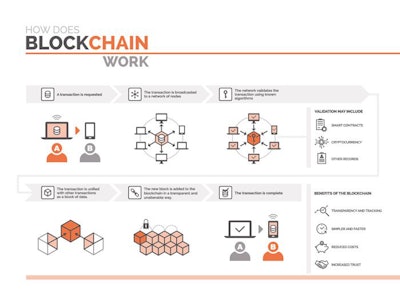
In the future, producers may use blockchain applications to streamline payments and profit from their data. | elenabs, iStock.com
Future of blockchain
Despite the global interest across sectors, Connolly is surprised blockchain development hasn’t progressed as rapidly as he had once expected and hoped for, but he’s optimistic about the technology’s future.
“Don’t lose faith in blockchain because you haven’t seen too many innovations yet,” he says. “I think in the next three years we’re about to see an awful lot of things happening and it’s just going to arrive quickly.”
De Ruyter de Wildt believes blockchain will become more commonplace with critical food products within five years, delivering a “digital passport” to consumers.
“I really think, within 5 to 10 years, food systems will be, by definition, digital with a blockchain layer,” she says.
De Ruyter de Wildt suggests ag industry stakeholders, including feed manufacturers, “take a leap of faith” and start experimenting with blockchain applications.
“They should ignore their very strong natural instinct to sit on their data,” she says. “I think that’s the biggest challenge. It somehow even feels counterintuitive, right? That protecting your data is going to benefit your company — but that’s not true. We see that it’s the other way around. Sharing data allows for stronger and deeper growth."
To be successful, blockchain, by definition, requires a network of suppliers, buyers and the end consumers operating within the value system.


